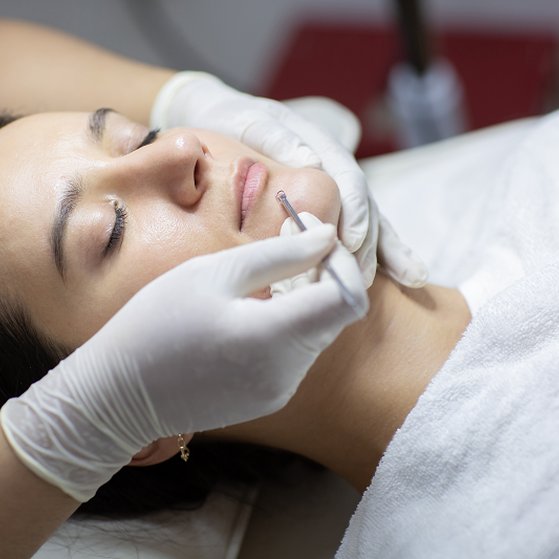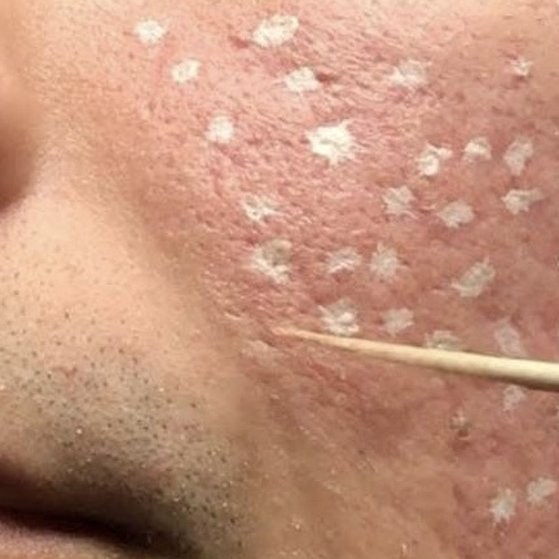Skin Conditions
Skin Conditions | Acne
Acne is by far the most common skin disorder that people seek treatment for. The condition is thought to affect 10 million people in the UK and varies greatly in severity from person to person. Some people may just have a few blackheads or white heads while others may have more severe nodular acne or cystic acne. Because the effects of acne are so visible, the condition can have a significant psychological effect as well as a physical one, by causing embarrassment and self consciousness.
Types of Acne
White Heads
White heads result when the pore is completely blocked, trapping oil known as sebum, beneath dead skin cells. They become red and inflamed because of bacteria known as P.acnes.
Blackheads
Blackheads are caused when the pore is only partially blocked. It is a myth that the black colour that gives them their name is caused by dirt. This is actually caused by the skin’s pigment, known as melanin, reacting with the oxygen in the air.
Papules
Appear as red, inflamed bumps on the skin. They have no head.
Pastules
A pastule appears as an inflamed, red spot, with a white or yellow centre.
Nodules
Nodules occur with severe acne and appears as large, hard bumps under the skin’s surface. They can often result in acne scars.
Cysts
Acne cysts occur in cases of severe acne and are effectively pus – filled nodules, they can be painful and often result in acne scarring.
What causes Acne?
Acne is categorised as a chronic inflammation of the sebaceous glands. This occurs when excessive oil production creates blockages in the glands or pores. These blockages appear as blackheads or whiteheads on the surface of the skin. Inflammation caused by bacteria known as Propionibacterium acnes or P.acnes turns them into red, puss-filled spots that we most commonly associate with the term acne. It is a misconception that acne is caused by poor hygiene or diet. Hormonal factors and stress play a stronger hand. However, for some people, certain food like dairy can aggravate spots.
Where can you get Acne?
Acne most commonly appears on the face, but it can occur all over the body on areas such as the back, torso, neck, shoulders and even the arms, buttocks and legs.
Who can get Acne?
Although you may think of acne as a teenage problem, that is not necessarily the case. Adult acne is actually on the rise, with men and particularly women in their late 20s and 30s and even 40s and 50s developing the condition, even if they did not have spots as teenagers.
We recommend these treatments for Acne
Book Acne Maintenance Treatment

Acne Maintenance Treatment
We use the latest technology to maintain your good skin, once you have completed our initial treatment course





